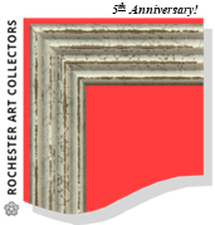 by Mike Kraus Reprinted with permission from a recent edition of Mike's e-newsletter | Copyright 2020 Your collection of art is a part of you. Personally selected pieces for your home and office. Works that you found visiting a gallery on vacation. A painting you commissioned to celebrate a special moment. The creation your grandmother hung in a prominent space in her home. And taking care of your art is taking care of your legacy. Are your pieces protected right now? Homeowner's insurance often excludes artwork from your policy. Check with your agent. They may offer special coverage or be able to direct you to a fine art insurer that specializes in your current needs. But, where do you want your art collection to be in the future? Your pieces should be a part of your estate planning and here are some options: 1) Individuals: Entire collection to one person or one specific piece to one specific person. Or any combination in between. 2) Individual Shares To An LLC: Create a corporation as owners of artwork and make your chosen heirs managers. This avoids the jealousy with the proceeds could be distributed evenly. The collection could continue to be maintained and used for investment or revenue generation. 3) Donate To Museum Or Other Institution: Contact recipient organization before donating to make sure your wishes are followed. Will it become part of their permanent collection or immediately sold at auction? Will your pieces be displayed or placed into storage? Are you donating individual pieces or the whole collection? Have any and all conditions put in an agreement and include it with your will. Remember, if you don't agree on the conditions there are plenty of other museums, foundations, schools, galleries, agencies, and workshops that would be honored to host your collection. 4) Your Own Museum: You may have a large enough collection to start your own museum. This is how many institutions got their start. Talk with your estate planning attorney about how to organize, manage, and endow this new entity. Do you know what you have? Taking an inventory of your collection is important. A simple spreadsheet can go a long way if it includes: artist's name, creation date, serial number, title, medium, origin country, size, invoice, and photo of piece. This will help you understand what you have, your insurance company, your heirs, and executor of your will. And, as always, discuss the consequences of your donation with your tax advisor. HAPPY COLLECTING! About Mike Kraus Mike Kraus was born on the industrial shoreline of Muskegon, Michigan. After earning his Fine Arts Degree from The School of the Art Institute of Chicago, he attended Grand Valley State University for his graduate degree. From there, he gained varied experiences from the Chicago Architecture Foundation, Art Institute of Chicago, Hauenstein Center For Presidential Studies, Lollypop Farm Humane Society, and the Children's Memorial Foundation. And every place he worked, he had his sketchbook with him and found ways to be actively creative. In 2014, Kraus became a full-time artist by establishing Mike Kraus Art. Since then, he has sold hundreds of paintings that are displayed in nearly every state and dozens of countries. Currently, Kraus lives in Rochester, New York with his beautiful wife and goofy dog.
0 Comments
Every year we take note of art venues that open and close. We also pay attention to venues that move or transform in one way or another. Below you’ll find a summary of the changes we noticed. If you know of other venues that have gone through some sort of change in 2020, please send a note to inspire@rochesterartcollectors.org We are absolutely certain this list is incomplete. 2020 was a year unlike no other. Many, if not most art venues are still on hiatus due to the pandemic. We tried to track more lasting changes (openings and closings, relocations and reorganizations) as they happened in 2020. Even now - some ten months into the pandemic - we still don't know the full impact of the COVID-19 pandemic on arts venues. Here is what we know so far about what happened in 2020: 540 West Main MOVED to 36 King Street in 2020 Artisans Annex NEW in 2020. Artisans Annex was founded in 2020 by the staff of ReHouse Architectural Salvage. Prior to the opening of Artisans Annex, ReHouse had previously hosted several events meant to inspire and exhibit creativity, and wanted to expand these opportunities to local artists and makers. King Street Collective NEW in 2020. King Street Collective is a collective of artists and designers inspired by female leaders throughout history, and empowered to carry on their legacy of progressivism and innovation through creative expression. Baobab Cultural Center CLOSED in 2020 The Black House NEW in 2020 The Black House's vision is to center Black American womxn and their history, art and contemporary culture. Create Art For Good MOVED to The Piano Works Complex at 349 W Commercial St (Studio 2200) in East Rochester in 2020 Gallery284 NEW in 2020 Gallery284 is a pop-up art and event gallery that hosts temporary exhibits and events that run for a limited amount of time – days, weeks or months. Gallery284 provides artists and creative’s an ala carte approach to promoting their work in a premier, secure and desirable retail location. The Gallery Lounge in Palmyra OPENED and then CLOSED in 2020 Rochester Art Collectors is alive and well even if the organization is operating at a very low level of activity due to the COVID-19 pandemic.
On March 13, 2020 Rochester Art Collectors halted all its programs through the spring and most of the summer due to the COVID-19 pandemic. In particular, we were very disappointed to postpone the launch of our new fantasy art collecting social media game, The Red Dot Challenge. (More on The Red Dot Challenge below.) Since March we have promoted just two Rochester Art Collectors programs. In August, during a lull in the pandemic, we co-sponsored and helped to promote the very first Pittsford Art Walk event. Five commercial galleries located in the Village of Pittsford organized an indoor/outdoor festival highlighting their galleries and celebrating their artists. Galleries moved some the art work they were promoting onto the the sidewalks and under tents. Hundreds of people swarmed up and down the streets of the Village that week in August. The event was a big success. As a result, we suspect there will be more Pittsford Art Walk events in the future. The pandemic numbers remained very low in the early part of the fall. So, in late in October we organized a program with Deborah Ronnen Fine Art and R1 Studios to offer collectors a chance to experience their pop-up exhibit, KOTA EZAWA: Taking a Knee. Unlike the Pittsford Art Walk program we had a very limited number of timed tickets in order to keep our participants safe. Luckily, Rochester Art Collectors has a very low operating budget. We are an all-volunteer group. So, as disappointing as our pandemic pause has been, staying viable hasn't been a heavy lift. You might ask, "What's next?" Rochester Art Collectors will slowly emerge over time to provide programs as the pandemic wanes. We will do so with careful consideration and with the most appropriate safeguards until society is out of peril. A principle element of our fantasy art collecting game, The Red Dot Challenge, involves in-person visits to venues that present art for sale. As a result, The Red Dot Challenge, too will have to wait until the pandemic passes. Unfortunately, we do not know exactly when we can begin to schedule programs or when we can launch The Red Dot Challenge. Rest assured, however, we WILL return and our programs WILL reappear. Stay tuned! Written By Sarah & Brad Butler. Butler of Main Street Arts Reprinted with permission from Main Street Arts | Get To Know Us blog series | Copyright 2020 SARAH Brad and I have what I think is the start of a really great art collection hanging on the walls of our home. Being the directors of an arts organization that hosts several exhibitions per year gives us the chance to see all types of work from new and familiar artists all the time. Sometimes we can’t let a piece of art leave the gallery unless it’s in our car and on its journey to our house. (Okay, maybe not sometimes…maybe often.) We have many pieces in our collection that we’ve acquired from our Main Street Arts connections including work shown in exhibitions, work from our gallery shop artists, and pieces from former artists in residence. Hanging in area of our stairwell is a drawing of our four-legged kids by July/August 2019 resident Geena Massaro that hangs below a Robert Marx painting that was included in his two-person exhibition in 2017. In another area, a painting of mushrooms by October/November 2018 resident Emily Tyman is paired with a painting by Jim Mott that was included in the Upstate New York Painting Invitational at Main Street Arts in 2017 and a ceramic sculpture by Autumn Hasthor, a now RIT alum, who had her BFA show Sewn Solid on the second floor of the gallery in 2018. Also included in the grouping, a ceramic sculpture by Lane Chapman (a former resident at the Flower City Arts Center) and a RoCo 6×6 featuring an elegant little glass mushroom by Sage Churchill Foster whose work is regularly featured in the gallery shop at Main Street Arts. The mantle in our living room features a mixed media piece by July 2017 artist in residence Cathy Gordon, alongside one of own Brad’s paintings, and a vessel by Rochester artist Peter Pincus from his solo exhibition at Main Street Arts in 2014. Also on the mantle: a tiki sculpture purchased from a Hawaiian artist working on the street in Lahaina, Maui from our honeymoon in February 2008, and a Mata Ortiz vessel by Mexican artist Octavio Silveiro which we acquired on a trip to Mexico in 2017. Main Street Arts is a wonderful resource in finding new and inspiring works to add to our personal collection, but we also love to find pieces to add when we visit other local arts organizations. Every year we attend the Flower City Pottery Invitational at the Flower City Arts Center, the Memorial Art Gallery’s Clothesline Festival and Fine Craft Show, and exhibitions at Rochester Contemporary including their 6×6 exhibition. We’ve acquired several cups from our annual juried exhibition The Cup, The Mug at Main Street Arts, as well as from the Flower City Arts Center, The Memorial Art Gallery, trips we’ve been on, and we even have a collaborative mug from August 2018 Main Street Arts residents Maliya Travers-Crumb and Jill Grimes. In addition to cups and mugs, we’ve started adding some beautiful bowls to our “cup cabinet” including work by ceramic artists Sang Joon Park and Kaete Brittin Shaw, and glass artist Nicolas Kekic—artists we were introduced to at the 2018 and 2019 MAG Fine Craft Show. Our collection is quickly outgrowing this space and I don’t see it slowing anytime soon! We also like finding gems from smaller galleries or artist studios. Last year we purchased this really wonderful piece by Pete Monicelli from his exhibition at Colleen Buzzard’s studio. It’s still waiting to be framed so I haven’t been able to fully appreciate its beauty as a part of the collection hanging on our walls yet, but I knew when we saw it that it would make a wonderful addition. We collect art because the work speaks to us in some way and reminds us of connections we have with the artists who created them—the reminders of residents who spent time with us at Main Street Arts, hot dog lunches and studio visits with Robert and Francie Marx, or a special vacation where we met the artist working on his or her craft. I wish that I could showcase each piece of art or grouping on our walls, but it’s hard to do because there is so much to say about each piece and the stories made when they are seen together in our home. BRAD For me, living with original art is a personal requirement right after food and shelter. I know that my quality of life would suffer without the variety of art objects I interact with every day. Working from home during this pandemic has made this even more clear. As I make my way downstairs at the start of each day, I am greeted by so many thought-provoking paintings, photographs, sculptures, drawings, and prints. Any beverages I drink each day, from cups of coffee to glasses—or ceramic tea bowls—of wine, have been made by an artist I know or whose work I admire. I have favorite cups and mugs in our collection but I find such joy in using a different cup every day. Where and how artwork is hung is important. I like to install the work in our home as I would in the gallery and enjoy bringing seemingly different kinds of art together in close proximity—this is an added benefit when you live in an old house. The walls of our own personal exhibition are always evolving. When something new is acquired, it finds its place next to pieces that we have already lived with for years. Continuing to add new artwork to our walls will often present new ways to view the work and I will notice new things. A new way to perceive the composition, a color that stands out differently on a particular day, or a new personal meaning to the piece. I know that my tendency to like certain types of artwork is informed by my own aesthetics and motivations as a painter. I like the blurred lines between my roles as a curator, collector, and artist. Sarah’s interests and background as a graphic designer play an equal role in the art we collect and I love the way we continue to influence each other’s taste in art. Sarah Butler is a graphic designer with a BFA in graphic design from Rochester Institute of Technology and an MPS in the business of art and design from the Maryland Institute College of Art. Sarah runs the business-side of things at Main Street Arts and does all of the graphic design work for the organization. She also manages our bookstore, Sulfur Books. In addition to being Main Street Arts Executive Director and Gallery Curator, Bradley Butler is an artist who makes atmospheric, abstract paintings. He has an MFA from Rochester Institute of Technology and is a native of the Finger Lakes region. Bradley has been with Main Street Arts before the renovations to the building were completed. He selects, curates, and hangs all of the exhibitions at Main Street Arts and is working to continually expand our program offerings. Rochester Art Collectors has suspended all in-person programs for the time being due to the COVID-19 pandemic.
The following programs that were scheduled have been canceled: Crafting Democracy | Talk by Eboni Jones | RIT Bevier Gallery | March 14, 2020 Red Dot Challenge:2020 | Info Session #2 | Boulder Cafe & Lounge | March 16, 2020 Buying Art at Auction | The Ronald and Krista Reed Collection | Cottone Auction House | March 28, 2020 Red Dot Challenge:2020 | Game Launch | April 1, 2020
Rochester Art Collectors is rolling out the super-fun FREE fantasy art collecting social media game Red Dot Challenge here in Rochester! You’ve heard of fantasy sports games like fantasy football, right? Well there’s also fantasy dating games, fantasy travel games, and fantasy role playing games. Fantasy art collecting is a recent entry into the growing social media fantasy gaming world. Informational meetings about Red Dot Challenge: Why is Rochester Art Collectors bringing the Red Dot Challenge to Rochester?
On Wednesday, February 26, 2020 Rochester-based author and former gallerist, Shirley Dawson, gave a talk at Cad Red Gallery in the Village of Pittsford inspired by an entry in her blog, Rochester Art Review. A nearly complete video of her presentation is embedded below. The text below the video was reprinted from her blog with permission.

I am surrounded by beautiful objects collected over a lifetime. I combine texture, color and shape in a way that enhances individual pieces and lends an aura of taste and interest to the complete environment.
When I die, the first stop for these treasures? An estate sale. Nobody in my family wants an entire houseful of “things”— they have houses full already. Increasingly, museums have no use for even good art unless it comes partnered with a sizable donation to store and care for extraneous objects. So for a few bucks, you can own my “eye.” But out of context, my valued objects will lose their punch. Against your cabbage rose wallpaper, my pottery will look like crap and my paintings are far too specific for somebody else’s traditional living room. After the household sale, the dregs and leftovers will be loaded onto a truck and sent off to Goodwill…or Habitat for Humanity… or some church somewhere. All good. I want to help the less privileged even after I’m dead and what better way to cheer up a refugee family than with a 4’ x 6’ painting of smears of gray and black paint! Or a big beautiful ceramic pot tenuously balanced on its 2 inch foot, so fragile that the slightest breath will send it crashing into oblivion? After tripping over that donated painting for the millionth time, a Habitat supervisor will say “Enough! Send this to…the dumpster, the trash heap.” Nobody will utter the slightest objection because like all things in this world, orphaned art eventually becomes just more disposable clutter. The bitter truth is that only a tiny fraction of artful objects will find long lasting value…just as high school phenom basketball players will mostly fail to reach the NBA…and odds are that the super talented singer in your choir will NOT become the next Aretha Franklin. You doubt me? Then you haven’t gone to estate sales lately. Or visited nursing homes. Or been called to help dispose of abandoned artwork left in a storage facility. I was bereft after one such incident. My friend Nancy wrote: “You’ve come face to face with the dark side of collecting. And as with everything else, it’s as if a mirror is being held up asking ‘what about you?’” Yikes! Has my life — my entire career — been misspent? Is collecting merely a nicer word for hoarding? Does the old adage “one man’s treasure is another man’s trash” apply to EVERYTHING, even art? Well, yes, but along with all the warts, collecting brings along unexpected positives.
And there it is — ultimately, collecting is a case for belonging — community. When we collect objects, we collect the stories too. We weave the thread of our being into the continuing thread of makers and the history of the things they make. It doesn’t matter what happens to these objects after we’re gone. If they find another home, good! If not, they haven’t been made — nor owned, nor loved — in vain. They served for awhile. The makers and their objects — the collectors who bought them —continued the evolutionary experience we share. That’s the best any of us can hope for. Every year we take note of art venues that open and close. We also pay attention to venues move or transform in one way or another. Below you’ll find a summary of the changes we noticed. If you know of other venues that have gone through some sort of change in 2019, please send a note to inspire@rochesterartcollectors.org A Different Path Gallery closed. New gallery to open??? The owner, Katherine Weston, closed A Different Path Gallery, sold the building and relocated to Vermont this past summer. A Different Path Gallery was an art fixture for nearly a decade on the west side of Monroe County within walking distance of the SUNY Brockport campus and shouting distance to Lift Bridge Book Shop, Java Junction Coffee and The Strand movie theater among other business institutions along Main Street in the Village of Brockport. The gallery was a hotbed of creative expression for those makers whose base of daily activity tended to hug the western edge of Monroe County. Rooms above the gallery housed one or more artist studios. A charming boutique gift shop with many artisanal and handmade items was located adjacent to the gallery space through an open threshold. STAY TUNED... Our sources tell us that an artist has purchased the building and may open a new gallery in that space before too long. Our fingers are crossed! Axom Gallery moved. Late in the Fall of 2019 Axom Gallery in conjunction with with the gallery's partner business, Axom Home, moved to a new location at 661 South Avenue. They were previously located for many years on Anderson Avenue near Good Luck restaurant, Anderson Alley and the Village Gate. The move returns them to their home territory in the South Wedge neighborhood where the owners, Robin & Rick Muto, have lived and started their businesses decades ago. When you visit the new location you'll immediately see the benefits of their new first floor storefront location and their dramatically larger retail space for walk-in customers. The artwork on exhibition is integrated throughout the retail area of the business. I'm told by Rick Muto, Axom Gallery's co-owner/curator, a more defined exhibition space will be developed over time. Still, very often the art will be shown in the context of their design offerings since most art buyers install the art they buy inside of their homes and offices. Cad Red opened. Cad Red opened their doors at in the Village of Pittsford at 34 South Main Street in the fall of 2019 with their first exhibition in October. The owner opened the gallery as a compliment to her beautifully curated antique and housewares business immediately next door but due to the quick success of the gallery she has decided to focus her entrepreneurial efforts on art rather than antiques. This lovely, intimate new gallery is located in a recently restored historic building nestled between other active businesses and where foot traffic is high. Two large storefront windows draw in light as well as passersby. Convenient parking is available immediately outside the front entrance to the gallery. Cad Red will host solo exhibitions as well as small group shows. The work will mostly feature living regional artists in most media including but not limited to photography and works on canvas. The gallery may also include artists working outside of the Rochester/Finger Lakes area on occasion. Fleuron Gallery closed. Fleuron opened their doors at in the center of the Village of Honeoye Falls at 10 North Main Street in June, 2018. That new retail venture was set in a charming early twentieth century storefront with big windows. Fleuron was what we call a "hybrid" commercial art gallery. In this instance the fine art gallery was nestled between a botanical boutique at the front of the shop and a small graphic design work space tucked away behind the gallery, up a small flight of stairs. Sadly, this sweet little village gallery closed in sometime during the winter of 2019. Gallery 74 has transformed into WOC ART Collaborative Over the years Ralph Thompson developed and nurtured a powerful artistic studio space called Gallery 74 that became a magnet attracting creativity in all forms. Although the gallery was used as a studio and exhibition space for his own creative purposes he welcomed other artists in all media as well as dancers, actors, musicians, community groups and more. Exhibitions and performances were regular elements of the gallery's operation. Thompson didn't apply for grants or solicit outside donations. He just opened the doors and the community he cherished found a home. In 2019 he decided to retire but that's not the end of his or this story! One very important measure of a successful life is the new growth that springs from the legacy of that life. In 2017-2018 Ralph Thompson welcomed Rachel Y. DeGuzman when she was looking for a place to host a series of "Long Table Discussions" around race, intersectionality and community in Rochester. Coming out of those discussions and others in January, 2019 WOC ART Collaborative began planning their future in a generous space adjacent to and carved out of Galley 74. Since that time DeGuzman has built a multi-generational collective of Black women & women of color creators in Rochester committed to bringing the power of their individual accomplishments, visions, and social justice practices to create an institution rooted in intersectional equity for women, femme, gender-variant and non-binary artists of color. WOC ART Collaborative was born in cradle of Ralph Thompson’s Gallery 74. Founding WOC ART Collaborative members include Rachel Y. DeGuzman, N’Jelle Gage-Thorne, Reenah Golden, W. Michelle Harris, Delores Jackson-Radney, Tianna Mañón, Rachel McKibbens, Nydia Padilla-Rodriguez, Danielle Ponder, and KaeLyn Rich. Many more creatives have been drawn to the cause and joined the organization as affiliate members. Expect to see some significant activity from WOC ART Collaborative in 2020. After a year of careful plannning WOC ART Collaborative now fully occupies the same space as the former Gallery 74 including the entire the third floor of the the Kee Lox building at 215 Tremont Street in Cornhill. There are two very large rooms and two smaller rooms which will eventually be reorganized as five rooms with three smaller rooms for storage, studio arts and podcasting and the remaining two larger rooms for administration, exhibition, meeting, social gathering and performances. Gallery 384 closed. This past spring Gallery 384 closed but not because the it wasn't succeeding. It was! Gallery 384 was what we call a "hybrid" venue. In this case the gallery was a mutually beneficial collaboration between gallery operator,Howard Koft, and the owners of the East Avenue Inn; located on the corner of East Avenue and Alexander Street. Artworks by local artists were allowed to exhibit in the motel lobby area, restaurant and hallways on the first floor. While the gallery organizer did not take a share of the sale proceeds a small portion of each sale contributed to a local charity. Gallery 384 had been in active operation exhibiting and selling artwork for about four years before it closed due to the sale of the motel which was demolished soon after the deal closed in the summer of 2019. Kristen Campo Fine Art & Design opened a retail location. Kristen Campo, owner of Kristen Campo Fine Art & Design took an important step in the Fall of 2019 when she opened a bricks-and-mortar location for her gallery at 3025 Monroe Avenue in Pittsford. Her brand new retail gallery is strategically placed on a high traffic stretch of Monroe Avenue across from Jewelers between Pittsford Wegmans and what may someday be the new Whole Foods. This stretch of Monroe Avenue has to be the hottest, most successful, high end retail stretch in all of Monroe County. Campo has combined over 20 years of creative expertise as an art dealer and interior designer in the greater Rochester area. She grew up in a family of artists and worked towards a BFA at Nazareth College. She gained her knowledge working in local art galleries for 17 years before obtaining her LLC in 2017 and branching out as Kristen Campo Fine Art & Design. In less than two months, her fledgling gallery headed to Miami to exhibit for its first time in Pinta Miami 2017, during Art Basel week. In 2019 she organized and promoted a large scale "artfare" in Rochester's Strathallan Hotel. Norchar's gallery space is on hiatus. Norchar has hosted bimonthly art exhibitions on the first floor of their office on Park Avenue for the past few years. The exhibitions were distinctive in that they were beautifully curated and expertly installed; not usually the case when artists exhbit in spaces where the artwork is not the focus of the environment. In addition, Norchar hosted well attended opening parties to celebrate the exhibitions and invite the public in for a look. Norchar is poised to expand in 2020. As a result, the owners did not feel like they had the capacity to continue on with the exhibitions for the time being. The owners have indicated they will take another look at exhibitions in their Park Avenue location at some point in the future. We hope they decide to take up the project again. In the meantime they will be missed. Pittsford Fine Art opened. Pittsford Fine Art opened their doors informally at the four corners in the Village of PIttsford as the curtain was falling on 2019, Their grand opening will be in early January, 2020 but they were already exhibiting and selling art from the get-go in December. Pittsford Fine Art is co-owned and operated by ten artist-partners: Kathy Armstrong, Steve BonDurant, Gilbert Jordan, Laurence E. Keefe, Chris Kolupski, Nancy Lane, Chris Manaseri, Rebecca Maynard, Robin McCondichie, Bill Mowson, and Roland (Chip) Stevens III. The gallery will show representative samples from each of the partners in the front of the space plus one artist featured on a more-or-less monthly basis. Visitors will be able to see more works by the partners as they move through the gallery. After January 7, 2020 the gallery will be open Tuesday through Sunday at noon and will remain open on those days until 6:00 pm except on Fridays when they will be open until 8:00 pm. Rochester Community Collage emerged. In case you haven't noticed collage art is SUPER hot in Rochester at the moment. in 2019 a new group of artists founded Rochester Community Collage. This new group offers studio arts programming as well as exhibition offerings. Rochester Art Collectors has listed this group under "ARTIST STUDIO/GALLERIES, ARTISTS' SPACES & CO-OPS" on our SOURCES page. You won't necessarily find this group in a dedicated gallery space. Instead they host pop-up exhibitions around town. Artist groups and coops help make the Rochester arts scene vibrant and interesting. One thing we can tell you for certain is there's never a dull moment around the Rochester Community Collage group!  Rochester Art Collectors agrees. We think Western New York needs deeper and more frequent public conversations about the art that is exhibited in our midst. Last fall in conjunction with Current Scene, the Small Venue Biennial developed by Rochester Contemporary Art Center (RoCo), Rochester Art Collectors co-sponsored a panel discussion titled "The State of Art Writing In Rochester" with panelists Rebecca Rafferty of City Newspaper; Colin Dabkowski, former arts critic for The Buffalo News; noted author, Robin L. Flanigan; Karen vanMeenen, former editor of the media arts journal Afterimage (currently at Writers & Books); and panel moderator, Sarah Webb, active in the Rochester art community over twenty-five years as an independent curator, educator, writer and artist. The panel discussed the need for more coverage of the arts as well as more critical conversations about art itself. Audience participation at the end of the presentation clearly indicated strong support for both. It so happened that just a few weeks before Current Scene opened Cornelia Magazine, produced by The Buffalo Institute for Contemporary Art, published it's inaugural issue and launched it's website in August. The timing of Cornelia’s first issue was an ideal backdrop for the panel discussion. The founders and editors, Emily Ebba Reynolds and Nando Alvarez-Perez (who also happen to be married), came to the discussion at RoCo and offered their views on the topic at hand. Cornelia sets out to achieve the following goals:
We read the first issue of Cornelia cover-to-cover as soon as we got our hands on a hard copy the night of the panel at RoCo and loved it! The second issue was published in December. We read all of Issue #2 online and it didn’t disappoint. We picked up a hard copy just recently at RoCo. Why bother with the hard copy? Because we’re collectors, dammit!
As you might expect, Cornelia focuses mostly on art exhibitions in the Greater Buffalo area and looks longingly northward towards the metropolis of Toronto. Why not? Buffalo and Toronto are the dominant artistic powerhouses in our region. And it must be said we love Buffalo's and Toronto's art scenes. Bringing solid information about those scenes to a Rochester audience is a huge benefit. While Rochester isn't a focus Reynolds and Alvarez-Perez have gone out of their way to include writers and exhibitions from our area. In their second issue they devote quite a lot of ink to Current Scene, for example. They’re writer, Dana Tyrrel, not only offered a summary and description of that ambitious program he also offered observations on how to improve next time around. I'm not sure we agree with his assessment but we sure appreciated his point of view and the fact he had a forum to offer his point of view. That's what this is all about: a healthy, respectful conversation. We look forward to reading issue #3! This is an ongoing series of brief articles highlighting local venues where you can purchase art. Each installment will include a very brief background about the venue at the top followed by a summary of how the venue operates so you'll know what to expect when you visit.  Scott Napier, Owner of AMoR Scott Napier, Owner of AMoR Most people know the Art Museum of Rochester either by its acronym, AMoR, or its distinctive logo rather than the business name itself. The logo sports a cherry red heart nestled atop the M. The logo says a lot about the place: friendly, informal, chiiillll. Just take on look at the owner's picture next to this post. He's a super-nice guy and it shows whenever you're around him. AMoR is definitely NOT your run-of-the-mill art gallery. It's a hybrid space that offers billiards and booze alongside the art. Just in case you're not convinced about how hip this place is you can walk from the art gallery area directly into a tattoo parlor. As if that's not enough proof, we've been there on at least one occasion when a group 8-10 gamers were playing Super Smash Bros. in the front room more or less in the middle of an art exhibition. True story. Let's face it, running a business on art sales alone is tough. Hybrids are one way to make the numbers work. AMoR has found a way do more than just pay bills and to do so for many years running. To be perfectly honest, we seriously doubt Scott Napier run his gallery any other way. How is this venue listed on the Rochester Art Collector's SOURCES page?
"Commercial Art Galleries & Venues That Function Like Commercial Art Galleries" General Description/Business Model: AMoR is a "bricks-and-mortar" business. We consider AMoR a "hybrid commercial gallery" because when you consider the art components on their own AMoR meets many of the criteria of a traditional gallery. The art is not an afterthought. The owner has a strong personal interest in the work and thinks of himself as a gallerist. AMoR operates on the consignment model with proceeds of all sales shared by the gallery and the selling artist. AMoR does not represent artists outside of their exhibitions except as described below or on an ad-hoc basis. Description of the Exhibition Schedule: AMoR rotates its exhibitions regularly. While they may not hit the once per month exhibition pace found at commercial galleries they usually have around eight exhibitions in a calendar year. Exhibitions run three to six weeks long. Exhibitions usually kick off with an opening party. Some exhibitions include a closing party as well. Hours of operation: AMoR is open to the public during regular business hours but their business hours aren't what you might expect of an art gallery. They're open from 5:00 pm to midnight Monday through Saturday and Sundays from noon to 6:00 pm. Visits to the gallery may also be made by appointment. Description of the Exhibition Environment: AMoR is located in a building what was built as a home and later converted & adapted to a retail “boutique” application. As a result the layout feels a lot like a large home when you walk through. There's a vestibule entry that leads into a large front room that may have been an enclosed porch. Step up from the front room into what was probably the living room when this home was first built. A brick fireplace is on the far wall. Walk through a central hallway past stairs towards the back of the building into a large open space that may have been the original dining room and kitchen. A well used pool table breaks up the space takes up about 1/3 of this area. You may find yourself navigating around players in order to see works installed in proximity to the pool table. There's a small public powder room off to one side. The tattoo parlor is in a large addition near the powder room. Art is exhibited for sale in all these areas of the first floor with the exception of the tattoo parlor where you'll see lots of art owned by the folks that want to decorate your skin. In addition, there are display cases for small artworks/collectables and racks for t-shirts as well as other AMoR related merch & ephemera. AMoR is not a white cube. Art work hangs on every vertical space including a couple of niche areas on the first floor and all the way up the open stairwell to the second floor. Most of the walls are plaster or drywall. One large wall is finished with corrugated aluminum giving the space a distinctive aesthetic. Although in some areas the ambient lighting is dim the artwork is hung and displayed respectfully and with appropriate lighting. Mostly the work is hung gallery style; each piece set on it's own with room for the work to “breathe”. However, we've seen work hung salon style, floort-to-ceiling, more than once at AMoR. Most of the work that is exhibited for sale is installed on the first floor. As a side note, due to the nature of some of the art on exhibit, there are times when the work is not presented framed. In those cases the artwork is literally tacked or otherwise affixed to the wall. Much of that sort of work is made from cardboard, paper, mixed media, or odd materials including everything from appropriated traffic signs to miniature railroad cars. If you want "precious," there are some shows that probably aren't for you. Once you reach the top the stairs you won't see much artwork from the regular exhibitions. Oh, there's art upstairs but as far as we can tell it's mostly permanently installed. The second floor is about pool, drinks and, if you insist, coffee or tea. How is the venue staffed? The owner or a paid staff member is always present when the venue is open to the public. Just like the owner, the paid staff is very friendly and more than willing to chat but, with respect to the art, they are only helpful to a point. Unless you talk to the owner you won't learn much about the artists or the artwork. on the other hand, we’ve had more than one interaction with patrons who were fairly knowledgeable about the work displayed as well as the artists who made it. Information About The Type of Work Exhibited: AMoR shows current or recent work made by living artists and created in nearly all media and in a variety of styles with an emphasis on two dimensional work. The gallery seems to prefer group exhibitions over exhibitions that feature only one artist. Nearly all the artists who show at AMoR are either resident in Rochester or connected to Rochester. There is a special emphasis on emerging artists and artists who depict urban settings or are influenced by an urban vibe. Works by "street" artists - muralists and those that come from a graffiti and public art background - are common. Still, we've also seen artists there who don't fall into that category at all including some of the most moving abstract works we've seen exhibited anywhere in Rochester. What information is available about the artists and artwork during an exhibition? Typically each artwork has a wall label with the artist's name, title and price. Occasionally, the work is labeled with number and the numbers correspond to the exhibition/price list. Unfortunately, AMoR does not usually offer written artist backgrounds, bios, statements or curriculum vitae. However, the owner - who usually acts as curator or co-curator - will be able to talk with collectors about the artists. Staff are usually not be as knowledgeable as the owner. Unless you go to the opening or you're lucky, you probably won't run into any of the exhibiting artists while you’re in the building. In terms of background info, you're pretty much on your own. We have never seen AMoR host an artist talks/panel during an exhibition. What is the typical price range for works presented by this venue? It's not unusual to find works of art in each exhibition available for around $100 or less. The average price is typically in the $300-$500 range. On occasion - depdending on the aritst - you may see work at AMoR priced above $1,000. We've seen at least one show with work priced as high as several thousand dollars. How does this venue handle sales of art work? AMoR will take payment on site as soon as you are ready. Works are sold on a first-come, first-served basis however the gallery may hold a work of art for a prospective buyer under certain limited circumstances. The gallery will accept cash, credit, debit and personal check. Note: AMoR will also allow installment purchases in many cases. Work that has been purchased in full may be taken by the new owner once the exhibition closes or if the final payment is received after the exhibition closes, then the new owner may pick the work up after the last payment has been received by the gallery. AMoR does not maintain a backroom inventory of unsold artwork although you might see work from the last show still on the stairway walls heading to the second floor. The gallery owner may occasionally act as matchmaker with an artist in cases where a collector wants to consider works not included in an current exhibition or works that may still be available from a past exhibition. As far as we know, AMoR does not offer delivery. Everything is local pickup. How does this venue market and promote their exhibitions? Mostly word-of-mouth with a touch of social media as well as a website. Facebook is probably your best bet. Please follow AMoR on Instagram and Facebook. Does this venue offer any art related services or products besides the artwork itself? No. |
Categories
All
Archives
March 2021
Header image © Roy Sowers 1999
Click for more info |
Rochester Art Collectors is a privately funded, independent, non-commercial group organized to promote collecting art.
The artwork you see on this site is not for sale. It is owned by private collectors. Rochester Art Collectors neither sells art nor represents artists. Rochester Art Collectors is not owned, managed, or controlled by any outside business, organization or enterprise. Rochester Art Collectors does not endorse any particular style of art, any particular artist, nor any particular venue to purchase art.
No entity on our site has paid to be listed. All listings on this site are free. A listing on this site does not constitute an endorsement by Rochester Art Collectors. Rochester Art Collectors strives to accurately represent all listed entities. Rochester Art Collectors reserves the right to limit, arrange, categorize or describe a listed entity in any way that suits the interests of this group. Any entity listed on this site will be removed by request of the listed entity. Any listed entity may be removed from this site by Rochester Art Collectors for any reason.
Privacy Policy: Rochester Art Collectors will not share any personal information about you without your explicit permission in advance. Rochester Art Collectors commonly uses eventbrite.com to invite members and the public to it's programs. As a result, members' names and email addresses may be collected by eventbrite.com. Click here for information about eventbrite.com's privacy policies.
The artwork you see on this site is not for sale. It is owned by private collectors. Rochester Art Collectors neither sells art nor represents artists. Rochester Art Collectors is not owned, managed, or controlled by any outside business, organization or enterprise. Rochester Art Collectors does not endorse any particular style of art, any particular artist, nor any particular venue to purchase art.
No entity on our site has paid to be listed. All listings on this site are free. A listing on this site does not constitute an endorsement by Rochester Art Collectors. Rochester Art Collectors strives to accurately represent all listed entities. Rochester Art Collectors reserves the right to limit, arrange, categorize or describe a listed entity in any way that suits the interests of this group. Any entity listed on this site will be removed by request of the listed entity. Any listed entity may be removed from this site by Rochester Art Collectors for any reason.
Privacy Policy: Rochester Art Collectors will not share any personal information about you without your explicit permission in advance. Rochester Art Collectors commonly uses eventbrite.com to invite members and the public to it's programs. As a result, members' names and email addresses may be collected by eventbrite.com. Click here for information about eventbrite.com's privacy policies.
Current Membership:
Watch us grow!

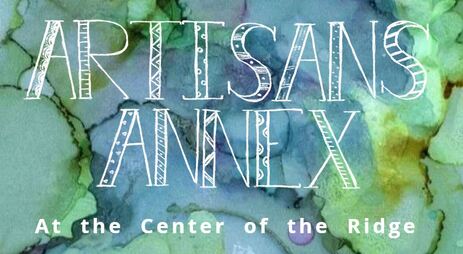
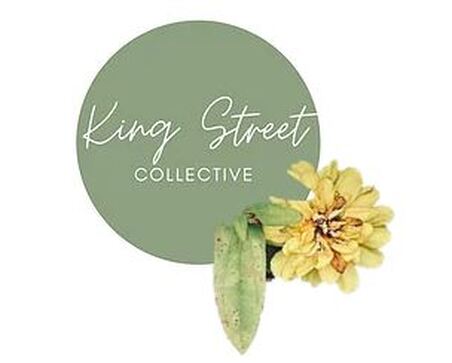

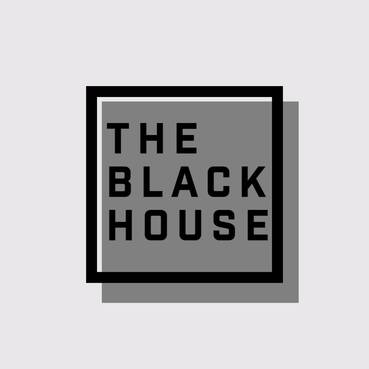

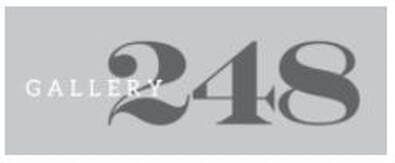


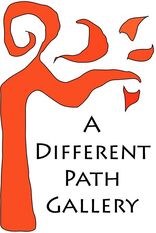
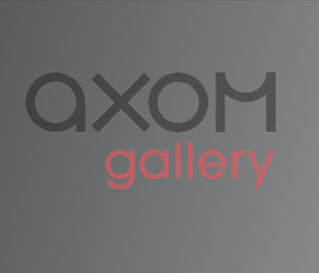
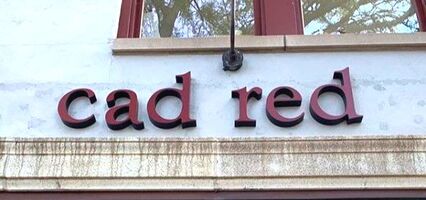
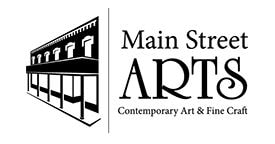
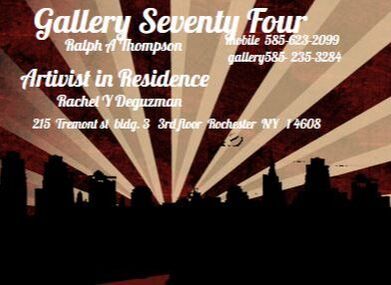
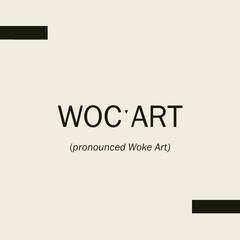
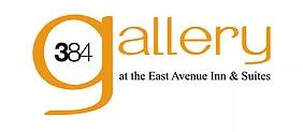
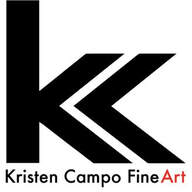

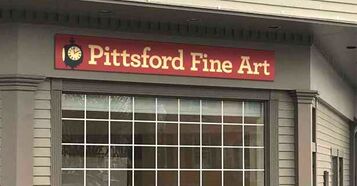
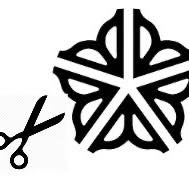


 RSS Feed
RSS Feed
